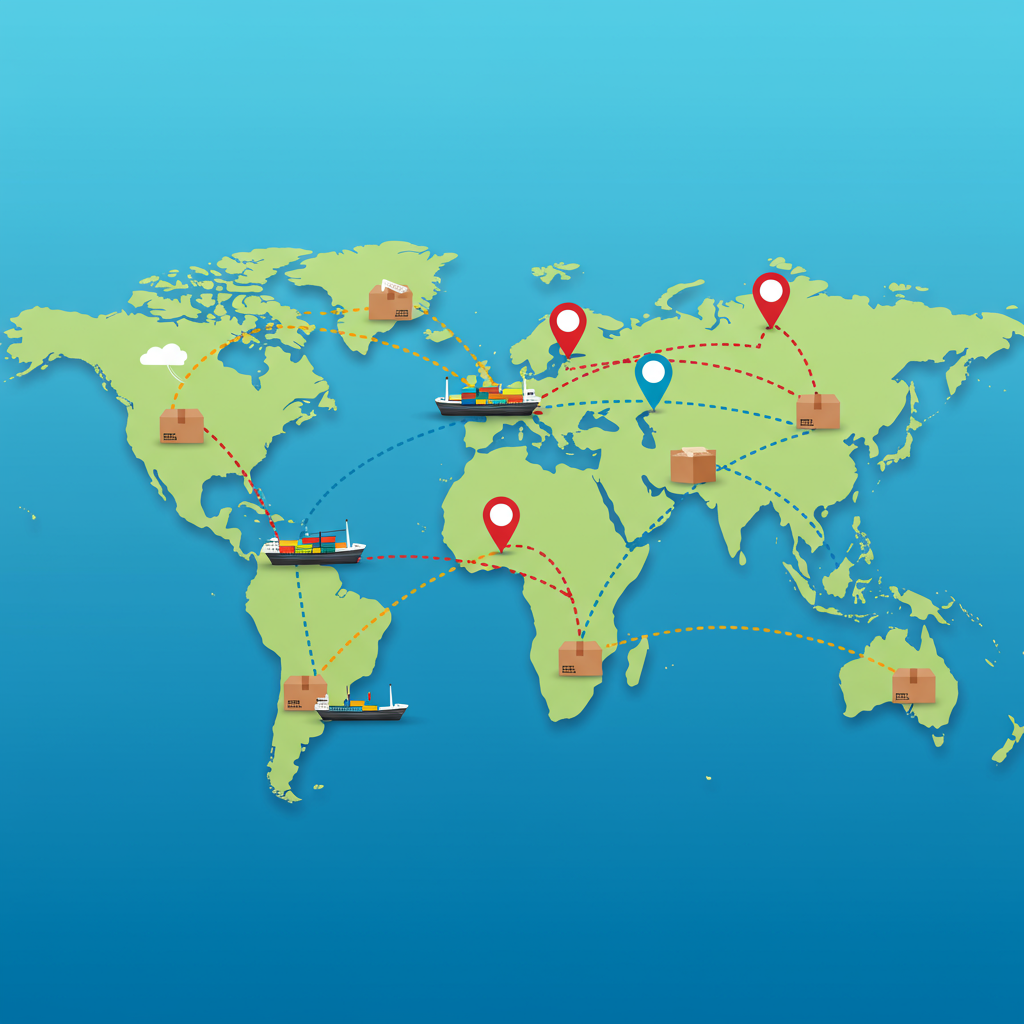A comprehensive guide for merchants looking to expand their reach beyond borders.
I’ve seen many Shopify merchants hesitate when it comes to international shipping. It feels daunting, doesn’t it? But trust me, expanding globally is one of the most powerful ways to grow your brand.
I want to share my insights on building a robust Shopify shipping strategy for international orders. It’s a journey I’ve navigated myself, and I believe my experiences can help you.
The world is your marketplace. Limiting yourself to domestic sales means missing out on a massive customer base. I believe that with the right approach, you can unlock incredible new revenue streams.
My first piece of advice is always to do your homework. Don’t just jump in. I recommend thoroughly researching potential target markets before you even think about shipping.
Consider factors like demand for your products, local competition, and import regulations. I always look for countries with a growing e-commerce penetration and a stable economy.
Understanding each country’s specific import duties, taxes, and prohibited items is crucial. I’ve learned this the hard way; a little research upfront saves a lot of headaches later.
Next, let’s talk about shipping carriers. You have several options, from global giants to specialized regional services. I often work with a mix to cover different needs.
Companies like DHL, FedEx, and UPS offer comprehensive international services. They provide reliable tracking, insurance, and often customs brokerage assistance. I find their reliability invaluable for high-value items.
National postal services, like USPS or Royal Mail, can be more cost-effective for lighter, less urgent shipments. I use them for certain product types where speed isn’t the absolute priority.
Some services combine postal networks with private carriers, offering a balance of cost and speed. I’m always exploring these hybrid models to find the sweet spot for my customers.
When I choose a carrier, I consider speed, cost, reliability, and the level of tracking provided. It’s about finding the right fit for your products and customer expectations.
How do you charge for shipping? This is a big decision that impacts conversion rates. I’ve experimented with various models to find what works best.
Shopify’s calculated rates are fantastic. They pull real-time rates directly from your chosen carriers based on package weight, dimensions, and destination. I highly recommend setting this up for accuracy.
For simplicity, you might offer flat rates per country or region. I use this sparingly, usually for very consistent product sizes or specific promotional periods.
Offering free international shipping can be a huge conversion booster. I often build the shipping cost into the product price to make this viable without eroding my margins.
You could also implement tiered rates based on order value or weight. For example, ‘Spend over $X for reduced shipping.’ I find this encourages larger orders and increases average order value.
Customs and duties: This is where many merchants get nervous. But it doesn’t have to be complicated. I’ll break down the essentials for you.
Understanding Delivery Duty Unpaid (DDU) and Delivery Duty Paid (DDP) is vital. With DDU, the customer pays duties upon delivery. With DDP, you collect them upfront.
I strongly prefer DDP where possible. No one likes unexpected fees at their doorstep. It significantly improves the customer experience and reduces abandoned orders.
You’ll need to classify your products with Harmonized System (HS) codes. These codes determine duties and taxes. I ensure all my product listings have the correct HS codes to avoid delays.
Accurate customs declarations are non-negotiable. I always double-check the commercial invoice and packing list to ensure they match the package contents precisely.
International shipments endure a lot of handling. I always use sturdy, appropriate packaging to protect my products from damage during transit.
Ensure all labels are clear, legible, and include all necessary customs information. I use integrated shipping solutions to automate label generation and reduce errors.
Don’t forget about international returns. I have a clear, concise international return policy prominently displayed on my website.
My policy outlines who pays for return shipping and how refunds or exchanges are processed. Transparency here builds trust and reduces customer service inquiries.
Shopify makes much of this easier. I leverage its built-in features and the extensive app ecosystem to streamline my international shipping operations.
Use Shopify’s shipping profiles to set different rates for different products or destinations. I find this incredibly flexible for managing diverse product lines.
Explore apps like EasyShip, ShipStation, or Shopify Shipping for advanced features, rate comparisons, and label generation. I’ve used several over the years to optimize my workflow.
Keep your international customers informed every step of the way. I send automated tracking updates and proactive notifications about potential delays.
Be transparent about potential customs delays or duty charges. I include this information on product pages and at checkout to manage customer expectations.
As your international sales grow, I recommend regularly reviewing your shipping strategy. What worked for 10 orders might not work for 100 or 1000.
Look for ways to optimize costs and improve delivery times. I constantly seek better carrier rates or more efficient packaging methods to enhance profitability and customer satisfaction.
International shipping on Shopify might seem complex initially, but with careful planning and the right tools, it’s entirely manageable. I’ve seen firsthand the incredible growth it can bring.
I hope this detailed guide helps you confidently expand your Shopify store globally. What are your thoughts on this article? I’d love to hear if you found it helpful or if you have any further questions.
Embrace the global marketplace, and watch your Shopify business reach new heights!






